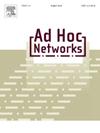TReB:任务依赖感知-使用二进制卸载的物联网资源分配
IF 4.8
3区 计算机科学
Q1 COMPUTER SCIENCE, INFORMATION SYSTEMS
引用次数: 0
摘要
物联网(IoT)应用在医疗保健、智能家居和自动驾驶汽车等领域的快速增长,导致计算密集型任务产生的数据呈指数级增长。由于雾节点(FNs)固有的异质性和资源约束,在雾环境中有效地将这些任务卸载到附近的计算资源仍然是一个重大挑战。大多数现有方法都无法处理延迟、能源和资源利用之间的权衡,特别是在管理依赖和独立任务工作负载时。此外,在密集互联的物联网网络中建立卸载策略被认为是np困难的。为了克服这些限制,在这项工作中,我们通过考虑物联网应用的独立和依赖任务,提出了一种使用二进制卸载(TReB)框架的任务依赖感知资源分配。TReB利用层次分析法(AHP)技术,通过考虑不同的属性来产生fn和任务的偏好。在建立了首选项之后,通过使用延迟接受算法(DAA)的一对多匹配过程处理二进制卸载。它允许TReB共同减少物联网网络中的系统能耗、延迟和停机次数。我们通过仿真实验评估了TReB的有效性,结果表明,与现有基线相比,该方法在整体系统延迟、能量和中断方面分别实现了49.1%、62.4%和41.7%的最小化。本文章由计算机程序翻译,如有差异,请以英文原文为准。
TReB: Task dependency aware-Resource allocation for Internet of Things using Binary offloading
The rapid growth of Internet of Things (IoT) applications in domains such as healthcare, smart homes, and autonomous vehicles has led to an exponential increase in data generated by compute intensive tasks. Efficiently offloading these tasks to nearby computational resources in fog environments remains a significant challenge due to the inherent heterogeneity and constrained resources of Fog Nodes (FNs). Most of the existing approaches fail to address the trade-offs between latency, energy, and resource utilization, particularly when managing dependent and independent task workloads. Moreover, establishing an offloading strategy within a densely interconnected IoT network is known to be -hard. To overcome these limitations, in this work, we propose a Task dependency-Aware Resource allocation for IoT using Binary offloading (TReB) framework by considering both independent and dependent tasks of IoT applications. The TReB utilizes the Analytic Hierarchy Process (AHP) technique to generate the preferences of FNs and tasks by considering diverse attributes. With preferences established, a binary offloading is handled through a one-to-many matching procedure, utilizing a Deferred Acceptance Algorithm (DAA). It allows TReB to jointly minimize system energy consumption, latency, and the number of outages in an IoT network. We evaluated the effectiveness of TReB through simulation experiments, and results show that the proposed approach achieves a 49.1%, 62.4%, and 41.7% minimization in overall system latency, energy, and outages compared to the existing baselines.
求助全文
通过发布文献求助,成功后即可免费获取论文全文。
去求助
来源期刊

Ad Hoc Networks
工程技术-电信学
CiteScore
10.20
自引率
4.20%
发文量
131
审稿时长
4.8 months
期刊介绍:
The Ad Hoc Networks is an international and archival journal providing a publication vehicle for complete coverage of all topics of interest to those involved in ad hoc and sensor networking areas. The Ad Hoc Networks considers original, high quality and unpublished contributions addressing all aspects of ad hoc and sensor networks. Specific areas of interest include, but are not limited to:
Mobile and Wireless Ad Hoc Networks
Sensor Networks
Wireless Local and Personal Area Networks
Home Networks
Ad Hoc Networks of Autonomous Intelligent Systems
Novel Architectures for Ad Hoc and Sensor Networks
Self-organizing Network Architectures and Protocols
Transport Layer Protocols
Routing protocols (unicast, multicast, geocast, etc.)
Media Access Control Techniques
Error Control Schemes
Power-Aware, Low-Power and Energy-Efficient Designs
Synchronization and Scheduling Issues
Mobility Management
Mobility-Tolerant Communication Protocols
Location Tracking and Location-based Services
Resource and Information Management
Security and Fault-Tolerance Issues
Hardware and Software Platforms, Systems, and Testbeds
Experimental and Prototype Results
Quality-of-Service Issues
Cross-Layer Interactions
Scalability Issues
Performance Analysis and Simulation of Protocols.
 求助内容:
求助内容: 应助结果提醒方式:
应助结果提醒方式:


